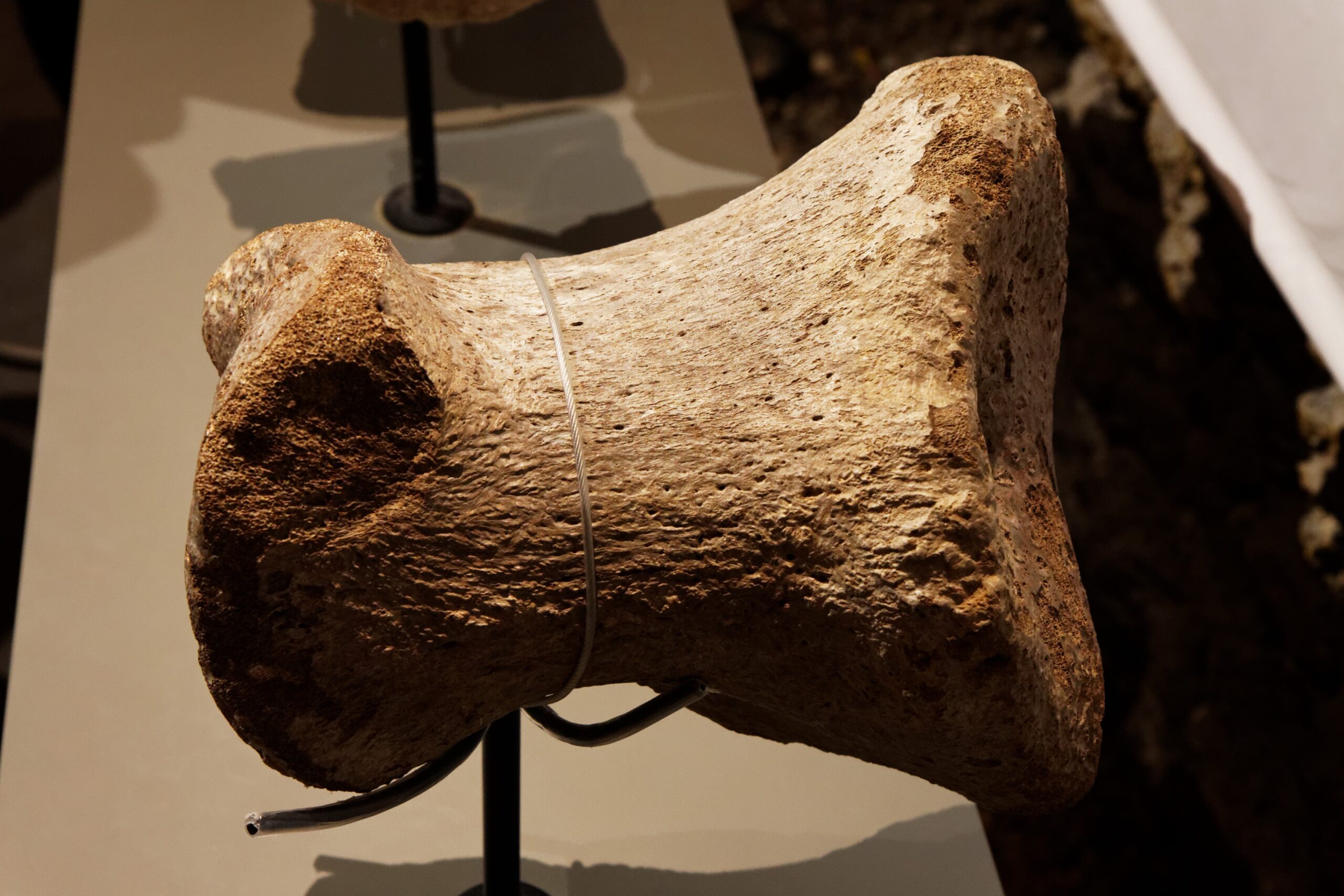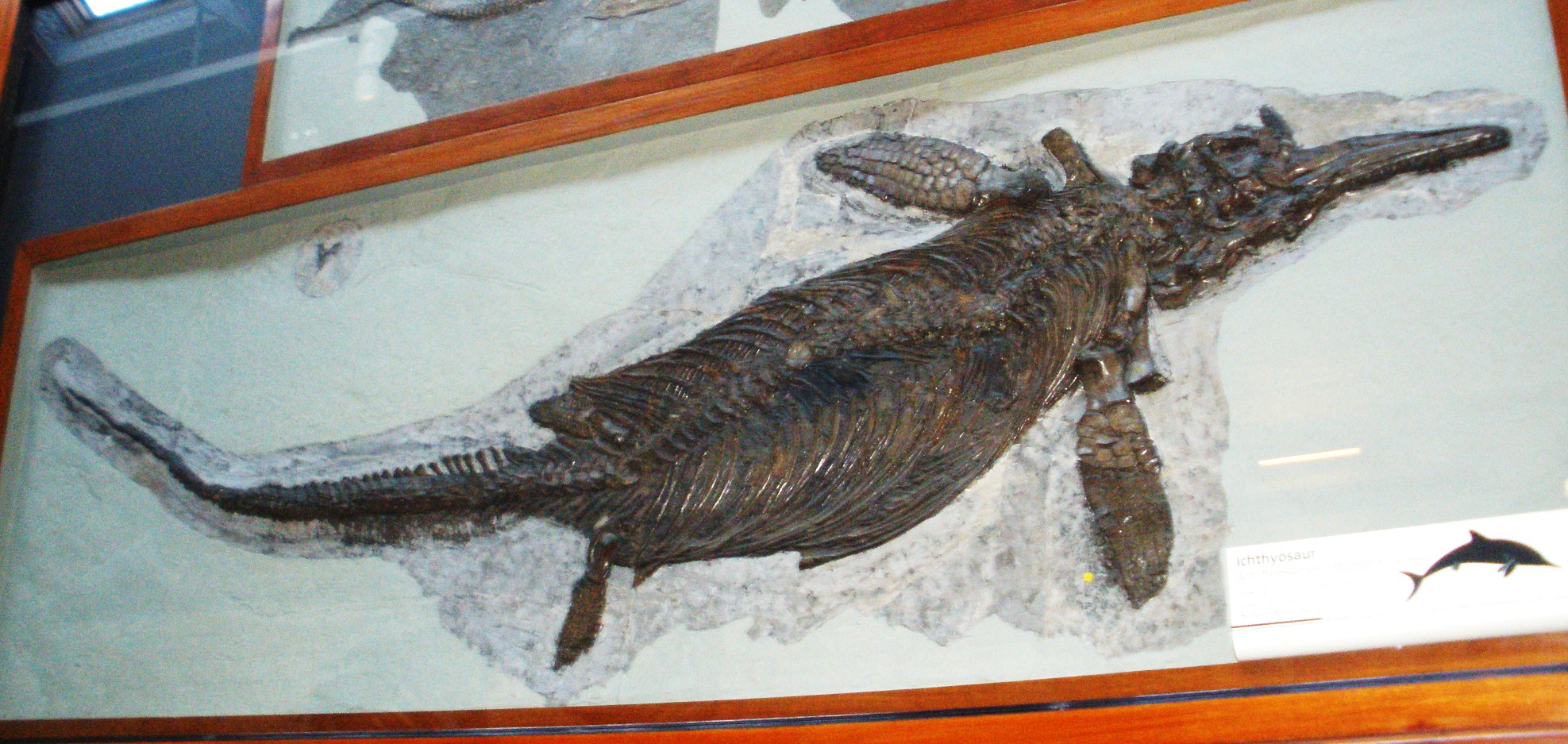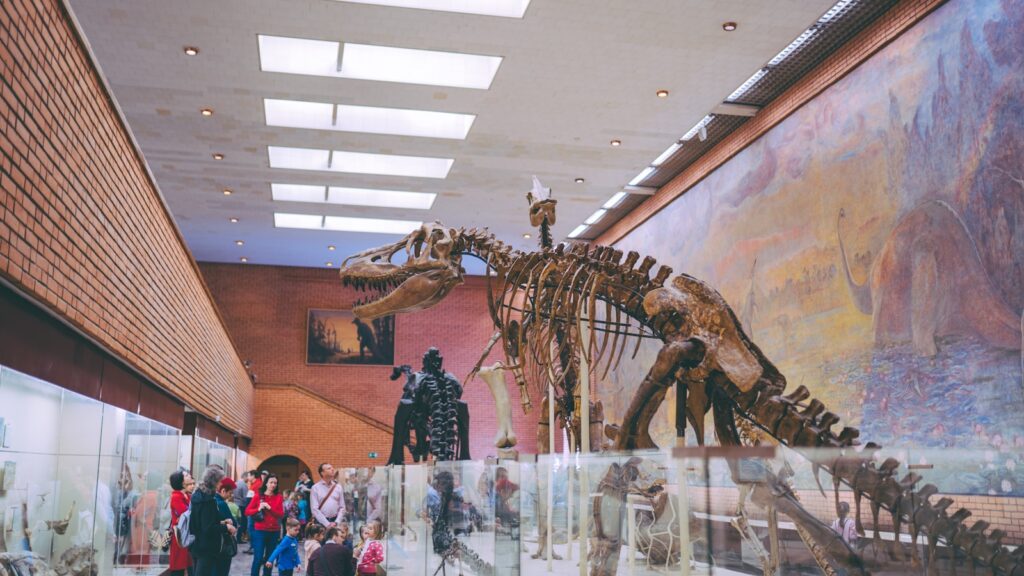Sometimes nature gets a little crazy with the size department. Throughout Earth’s long history, creatures have emerged that make today’s largest animals look like house pets. But here’s the thing about going supersized in the natural world – it’s a high-stakes gamble where the winners become legends and the losers become fossils.
The Gigantopithecus: When Apes Became Titans
Imagine bumping into a 10-foot-tall ape weighing nearly 600 pounds during your morning jog. That nightmare scenario was reality for early humans in Asia, where Gigantopithecus blacki roamed the forests for over a million years. These massive primates were essentially King Kong without the skyscraper-climbing hobby.
Their enormous size came with serious drawbacks though. When forests began shrinking during climate changes around 300,000 years ago, these gentle giants couldn’t adapt their diet or behavior fast enough. While smaller, more flexible primates survived by eating varied foods and moving between habitats, Gigantopithecus remained stuck in their old ways.
The lesson here is brutal but clear – being the biggest doesn’t always mean being the best. Sometimes the most successful strategy is knowing when to downsize rather than double down on enormity.
Argentinosaurus: The Walking Skyscraper That Ruled Patagonia
Picture a creature so massive that its heart alone weighed as much as a small car, and you’re getting close to understanding Argentinosaurus. At 115 feet long and weighing up to 100 tons, this South American titan holds the crown as possibly the largest land animal ever to walk Earth.
What’s mind-blowing is how these colossal sauropods solved the engineering nightmare of supporting their own weight. Their bones were hollow like bird bones but reinforced with internal struts, creating a natural skyscraper framework. Their necks alone stretched 40 feet, allowing them to strip vegetation from treetops like living cranes.
But size came with a price tag measured in tons of food daily. When climate shifts reduced their plant-rich environments, these walking mountains became too expensive for nature to maintain. Their extinction reminds us that even the mightiest can fall when the dinner table gets smaller.
Megalodon: The Ocean’s Ultimate Apex Predator
If you think great white sharks are terrifying, thank your lucky stars you never encountered Carcharocles megalodon. This prehistoric monster stretched 60 feet long with teeth the size of your hand, making modern sharks look like minnows by comparison.
Megalodon ruled the oceans for 15 million years by perfecting the art of being an unstoppable killing machine. Their jaws could generate bite forces of 40,000 pounds per square inch – enough to crush a small car. They hunted whales like we hunt fish, turning the ocean into their personal all-you-can-eat buffet.
Yet even ocean royalty isn’t immune to evolutionary pressure. When global cooling changed ocean currents and their whale prey evolved new migration patterns, Megalodon’s specialized hunting strategy became a liability rather than an asset.
Titanosaur Discoveries: Giants Hidden in Plain Sight

The fossil record keeps surprising us with creatures that push the boundaries of believable size. Recent discoveries in Argentina have unearthed titanosaur species that make Argentinosaurus look modest, with some specimens suggesting animals reaching 130 feet in length.
These discoveries challenge our understanding of biological limits. How did creatures this massive find enough food? How did they mate? How did baby titanosaurs avoid being accidentally stepped on by their parents? Each new fossil raises more questions than answers.
What’s fascinating is that these giants lived alongside much smaller dinosaurs, creating ecosystems where mouse-sized mammals scurried between the feet of creatures larger than blue whales. It’s like discovering that elephants and ants once shared the same neighborhood.
The Terror Birds: When Feathers Met Fury
After the dinosaurs vanished, South America became a playground for evolution’s most twisted imagination. Enter the terror birds – flightless predators standing 10 feet tall with beaks designed for demolition work rather than seed-cracking.
Phorusrhacids ruled South American food chains for 60 million years, proving that you don’t need teeth to be a top predator. Their massive skulls housed brains adapted for hunting, while their powerful legs could chase down prey at speeds reaching 30 mph. Think of them as nature’s answer to velociraptors, but supersized and angrier.
These feathered nightmares dominated until the Great American Interchange allowed new predators to invade their territory. When saber-toothed cats and other placental carnivores arrived, the terror birds discovered that being big and scary wasn’t enough anymore.
Deinosuchus: The Crocodile That Ate Dinosaurs
Modern crocodiles are impressive enough, but Deinosuchus took the basic crocodile design and cranked it up to absolutely ridiculous proportions. At 40 feet long and weighing 8 tons, this Cretaceous monster was less reptile and more living battleship.
What made Deinosuchus truly terrifying wasn’t just its size, but its menu preferences. Bite marks on dinosaur bones reveal that these super-crocs regularly hunted animals we think of as apex predators. Even large theropod dinosaurs had to watch their step around water, knowing that death might be lurking just beneath the surface.
The success of Deinosuchus demonstrates that sometimes the best evolutionary strategy is taking a proven design and scaling it up dramatically. Unfortunately, when their dinosaur prey disappeared, these enormous crocodilians found themselves without a food source capable of sustaining their massive bodies.
Helicopter Damselflies: Ancient Airborne Giants
The Carboniferous period was when insects decided to experiment with truly absurd proportions. Meganeura, often called helicopter damselflies, boasted wingspans reaching 28 inches – imagine dragonflies the size of small birds patrolling prehistoric skies.
These aerial giants thrived in an atmosphere containing 35% oxygen compared to today’s 21%, allowing insects to grow to sizes that would be impossible in our current world. Higher oxygen levels meant more efficient respiration, enabling these creatures to power their massive flight muscles without suffocating.
When oxygen levels dropped, these flying giants faced a cruel reality check. Their oversized bodies required more oxygen than the atmosphere could provide, forcing them into an evolutionary dead end. It’s a perfect example of how environmental changes can turn an advantage into a fatal flaw overnight.
Mammoth Evolution: The Ice Age Success Story
While many giant species represent evolutionary failures, mammoths tell a different story – one of remarkable adaptation and long-term success. These woolly titans survived multiple ice ages by embracing their enormous size as a survival tool rather than a burden.
Mammoth gigantism served multiple purposes in their harsh environment. Large bodies retained heat more efficiently, while their massive tusks served as snow plows for accessing buried vegetation. Their trunk strength allowed them to break through ice and strip bark from frozen trees when other food sources disappeared.
The tragedy of mammoth extinction lies not in evolutionary failure, but in timing. These perfectly adapted giants survived for hundreds of thousands of years until human hunting and rapid climate change at the end of the last ice age created pressures they couldn’t overcome.
Dromornis: The Thunder Bird That Shook Australia
Australia’s evolutionary isolation created some truly bizarre creatures, but few match the sheer intimidation factor of Dromornis stirtoni. Standing 10 feet tall and weighing 1,200 pounds, this flightless bird made ostriches look like sparrows.
Unlike terror birds, these Australian giants were primarily herbivorous, using their massive size to access vegetation other animals couldn’t reach. Their enormous beaks could crack the toughest nuts and seeds, giving them exclusive access to food sources across the Australian continent.
The arrival of Aboriginal peoples around 50,000 years ago coincided with the extinction of most Australian megafauna, including Dromornis. Whether through hunting pressure or habitat modification, human activity likely contributed to ending the reign of these thunder birds.
Giant Marine Reptiles: Masters of Prehistoric Seas

The oceans of the Mesozoic era hosted some of the most impressive giants in evolutionary history. Leedsichthys, a filter-feeding fish, reached lengths of 55 feet, while marine reptiles like Shastasaurus pushed even further into giant territory.
These aquatic titans thrived because water provided the buoyancy support that land-based giants struggled with. The ocean’s three-dimensional environment allowed for hunting strategies and body plans impossible on land, creating evolutionary niches that land animals could never fill.
The extinction of these marine giants coincided with major oceanic changes and the rise of new predator groups. As the seas changed, these specialized giants found themselves outcompeted by smaller, more adaptable species that could thrive in the new oceanic conditions.
The Size Paradox: Why Bigger Isn’t Always Better
The fossil record reveals a fascinating pattern – periods of gigantism often precede mass extinctions. This isn’t coincidence but rather a warning sign that ecosystems are approaching their limits.
Giant animals require stable environments with abundant resources, making them living barometers of ecological health. When giants disappear, it signals that environmental conditions are shifting faster than evolution can keep pace with adaptation.
Modern conservation efforts focus heavily on protecting large species partly because we’ve learned this lesson from the fossil record. Elephants, whales, and other contemporary giants serve as indicators of ecosystem health, just as their prehistoric predecessors did millions of years ago.
Lessons from the Giants: Evolution’s Ultimate Gamble
The story of evolutionary gigantism teaches us that nature occasionally takes spectacular risks with size. Sometimes these gambles pay off spectacularly, creating creatures that dominate their environments for millions of years. Other times, they result in evolutionary dead ends when environments change.
What’s remarkable is how many of these giants succeeded not despite their size, but because of it. They filled ecological niches that smaller animals couldn’t access, from reaching treetops to hunting prey that others couldn’t tackle.
Yet their eventual extinction reminds us that no evolutionary strategy is permanent. The giants that once ruled Earth serve as monuments to both the incredible creativity of evolution and its ultimate unpredictability. In nature’s casino, going big might win you the jackpot, but the house always has the final say.



